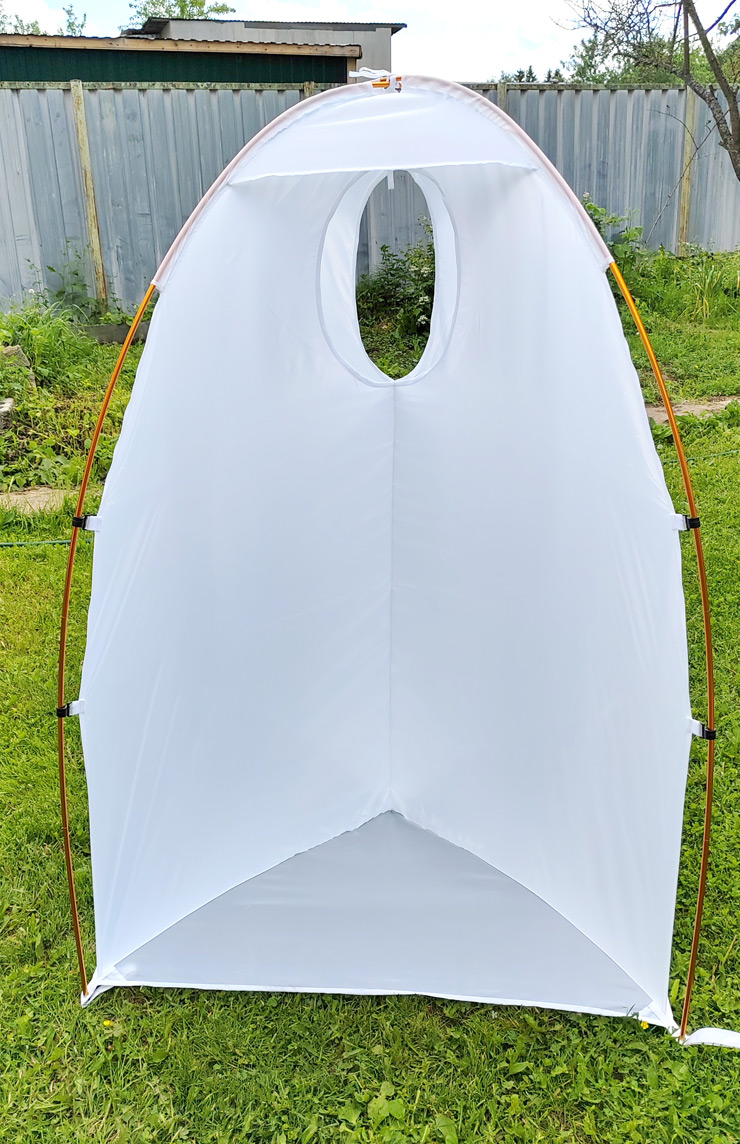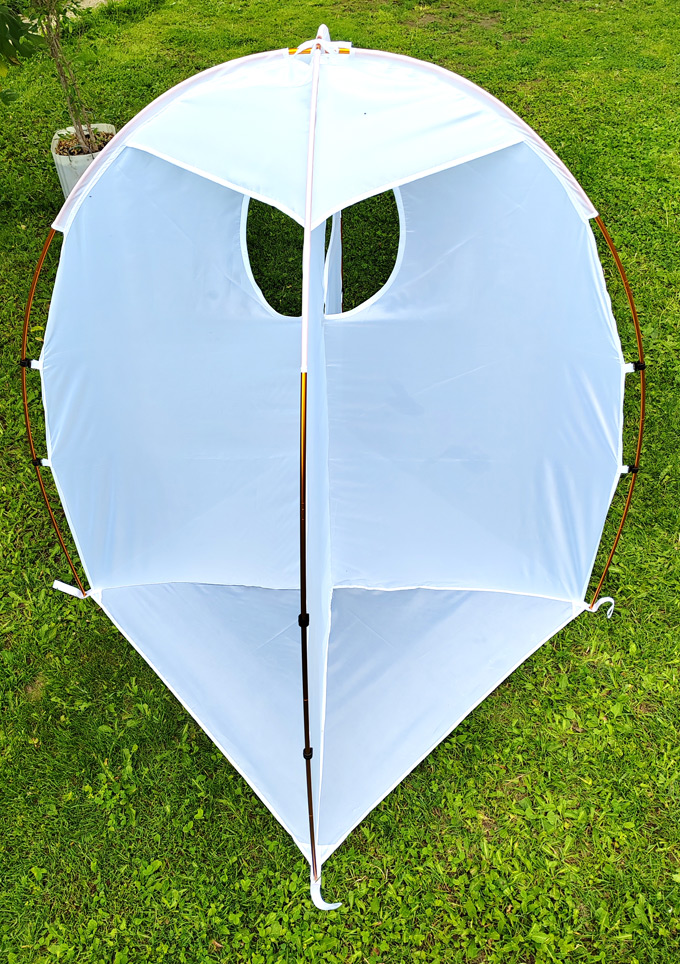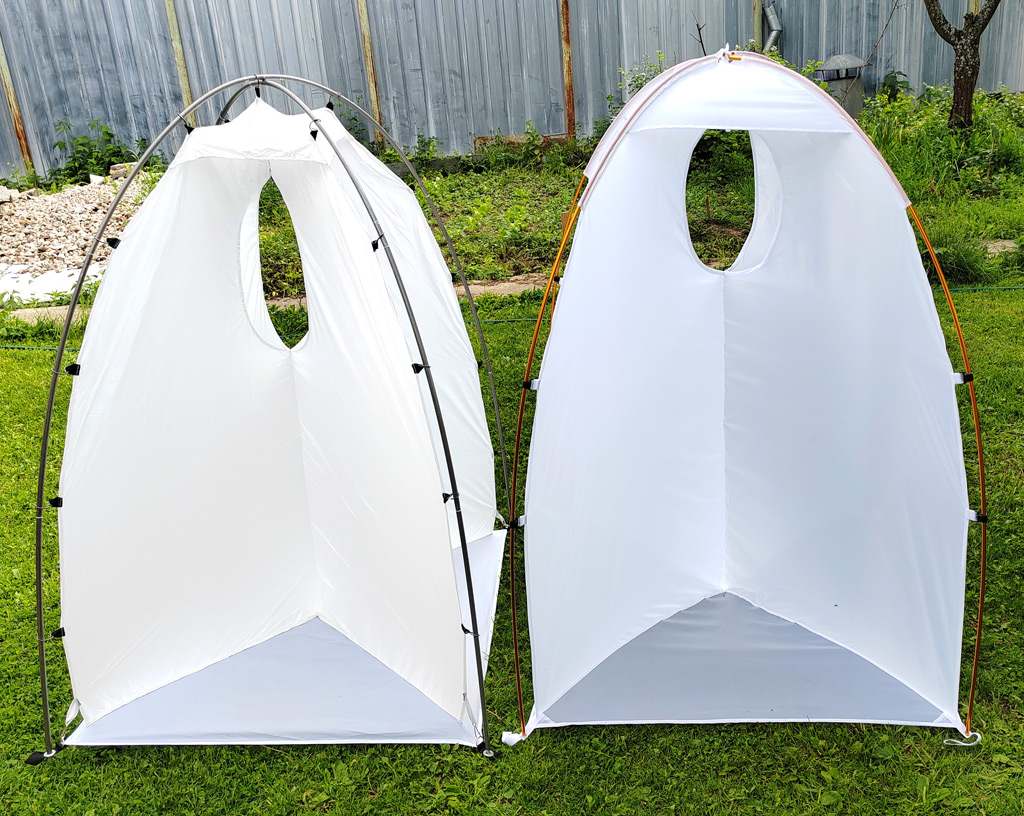New screens for catching insects in the light. What changes/improvements are needed?
Community and Forum → Entomological collections → New screens for catching insects in the light. What changes/improvements are needed?
Peter Khramov, 06.06.2024 18:48
We have accumulated a lot of feedback about the screens, plus we have generated our own thoughts on how to improve them. Now we are making new versions of screens for catching insects in the light. Who is interested in the question — let's discuss it on the subject of was / became plus what you have any suggestions plus you can discuss the scheme of working with different screens. Our old versions of screens for comparison-follow the link https://naturaliste.ru/catalog/s234 Now about the new ones:  Height 155 cm (was 150 cm). Metal frame, length of one section is 40 cm (in previous models-60 cm). The diameter of the frame is smaller, but the alloy from which it is made is better (although the old one was not bad). As a result, the product is much more compact to carry. Plus less weight. The case is not tied, but with a zipper, and on the larger side — the screen is much more convenient to pack. Parts of the frame sections that fit into neighboring ones are better made (there is less chance of breaking them, even if you haven't fully inserted one section into another). Sewn bottom, there is a roof (previously not all models had it). Water-permeable fabric (in previous models, the fabric was poorly permeable to water, as a result, especially on uneven surfaces, water could accumulate at the bottom). In the upper part, the fabric is attached to the frame not with hooks, but with pockets, as a result of this and as a result of a smaller gap in the place where the hooks are attached and a slightly modified shape, the surface area of the product has become noticeably larger at almost the same height and the same bottom area. Previously, metal hooks were used — relatively heavy and easily clinging to the fabric with sharp edges (they could even tear the fabric if handled carelessly). Now we put hooks made of durable plastic, hold no worse than metal (high-quality plastic, not cheap), do not tear the fabric, provide a smaller gap between the fabric and the frame. The lamp is located higher than the old model, and next to it are those parts of the screen that are attached with pockets, and not hooks, so it is the lighting in the upper part of the screen that has changed for the better even more than in the lower part. The kit includes lighter and at the same time quite reliable pegs.
Height 155 cm (was 150 cm). Metal frame, length of one section is 40 cm (in previous models-60 cm). The diameter of the frame is smaller, but the alloy from which it is made is better (although the old one was not bad). As a result, the product is much more compact to carry. Plus less weight. The case is not tied, but with a zipper, and on the larger side — the screen is much more convenient to pack. Parts of the frame sections that fit into neighboring ones are better made (there is less chance of breaking them, even if you haven't fully inserted one section into another). Sewn bottom, there is a roof (previously not all models had it). Water-permeable fabric (in previous models, the fabric was poorly permeable to water, as a result, especially on uneven surfaces, water could accumulate at the bottom). In the upper part, the fabric is attached to the frame not with hooks, but with pockets, as a result of this and as a result of a smaller gap in the place where the hooks are attached and a slightly modified shape, the surface area of the product has become noticeably larger at almost the same height and the same bottom area. Previously, metal hooks were used — relatively heavy and easily clinging to the fabric with sharp edges (they could even tear the fabric if handled carelessly). Now we put hooks made of durable plastic, hold no worse than metal (high-quality plastic, not cheap), do not tear the fabric, provide a smaller gap between the fabric and the frame. The lamp is located higher than the old model, and next to it are those parts of the screen that are attached with pockets, and not hooks, so it is the lighting in the upper part of the screen that has changed for the better even more than in the lower part. The kit includes lighter and at the same time quite reliable pegs.  In the upper part of the screen there are special ties that can additionally fix the arches of the frame and the fabric part. The product as a whole has become more pleasant to look at.
In the upper part of the screen there are special ties that can additionally fix the arches of the frame and the fabric part. The product as a whole has become more pleasant to look at.  The rigidity of the frame is less (due to the thinner frame). If you use stretch marks, this difference is not very noticeable, but if you fix it only with pegs, it is noticeable. The difference is more psychological than practical, but it is there. Questions for users: 1. There is an idea to make the screen wider. In this case, its area will increase significantly (although most of it is not at the top of the screen), but the price will increase slightly. The load on the frame will be less — less likely to break. What do you think? 2. There is an idea to use a frame made of a new alloy, but still from thicker tubes. Stiffness when used without stretch marks will increase in this case. Alternatively, do 155 cm on a thinner one, and 180 on a thicker one. What do you think? 3. Do you want to make a version of the screen on the bar-we put the central bar, the petals of the screen radiate from it (the petals reach a height of about 140 cm), and in the upper part of the bar — a lamp holder plus loops for stretch marks. The height of the rod is about 250 cm. That is, the lamp is noticeably higher than the usual screen, but the amount of light that falls on the screen petals is less. At the same time, the rod can be made from sections compatible with Naturaliste nets, i.e. I fished with a net during the day, and at night I used the net sections for the screen rod. It will be more difficult to set up such a screen than the usual one, but the effect can be interesting. What do you think?
The rigidity of the frame is less (due to the thinner frame). If you use stretch marks, this difference is not very noticeable, but if you fix it only with pegs, it is noticeable. The difference is more psychological than practical, but it is there. Questions for users: 1. There is an idea to make the screen wider. In this case, its area will increase significantly (although most of it is not at the top of the screen), but the price will increase slightly. The load on the frame will be less — less likely to break. What do you think? 2. There is an idea to use a frame made of a new alloy, but still from thicker tubes. Stiffness when used without stretch marks will increase in this case. Alternatively, do 155 cm on a thinner one, and 180 on a thicker one. What do you think? 3. Do you want to make a version of the screen on the bar-we put the central bar, the petals of the screen radiate from it (the petals reach a height of about 140 cm), and in the upper part of the bar — a lamp holder plus loops for stretch marks. The height of the rod is about 250 cm. That is, the lamp is noticeably higher than the usual screen, but the amount of light that falls on the screen petals is less. At the same time, the rod can be made from sections compatible with Naturaliste nets, i.e. I fished with a net during the day, and at night I used the net sections for the screen rod. It will be more difficult to set up such a screen than the usual one, but the effect can be interesting. What do you think?
Comments
New comment
Note: you should have a Insecta.pro account to upload new topics and comments. Please, create an account or log in to add comments.
* Our website is multilingual. Some comments have been translated from other languages.
Random species of the website catalog
News
- 02.03.2025: Moscow Insect Fair: New section on the Insecta.pro Website
- 31.12.2024: Если нужно загрузить на сайт много фотографий
- 10.12.2024: Новое поле в «Поиске энтомологов»
New photos (03.03.2025)
Fresh from the community
- 15:47, P. Khramov: The "official" section of the Mosco...
- 14:25, P. Khramov: With the blessing of Pavel and Anat...
- 20:46, P. Khramov: / Viktor Kolesnikov → Elachista / ...
Popular insects
Recommended blog topics
- ICZN Election of Commissioners
- A. Gordon, O. Gorbunov, V. Murzin on Russian TV in 2004
- 20th International Insect Fair in Moscow (Russia, October 2023)
- The butterfly collection at the California Academy of Sciences



























